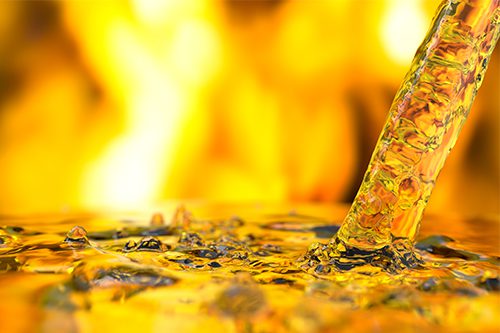Industrial Lubricant

There are several factors to consider when selecting the right industrial lubricant. A manufacturer’s recommendation is a great starting point, but it doesn’t have to be the only option. Most manuals are written for ideal conditions, but these guidelines don’t address the real environment in which the equipment is being used. It’s best to use an industrial lubricant that meets the specific demands of your operation. There are new advancements in lubrication that could prove to be more reliable or extend equipment life further if you are willing to do the research and understand the basics.
We recommend customers understand the “4 C’s to Lubrication” :
- Correct Technology
- Correct Quantity
- Correct Frequency
- Correct Procedures
Correct Lubrication Technology
- Temperature determines lubricant base oil type
- Speed determines viscosity required (at operating temperature)
- Load, vibration, and moisture determine the additive package
There are three (3) classifications of a lubricant:
- Fluid (Liquid)
- Semi-Solid (Grease)
- Solids (Dry)
Correct Lubrication Quantity and Frequency
It’s important to understand the damage that over or under greasing can cause your equipment. Manually re-greasing too often and/or with the incorrect amount, or automatically lubricating with the incorrect lubricant can cause harm. Whether you choose an automated system or manual, the goal should be to provide the right type of lubricant, in the right amount, at the right time. This approach allows for a constant level of protection.
Frequent bearing failure is a prime example of damage caused by over or under greasing. According to the American Bearing Manufacturers Association (ABMA), improper or insufficient lubrication is the cause of 64% of bearing failures. It is important to understand the various parameters surrounding the operation of any given bearing to properly select re-lubrication intervals. Over greasing will lead to increased operating temperatures, resulting in energy losses and eventual bearing failure. Similarly, using too little grease will not allow the grease to properly carry the load applied to it, which will also result in bearing failure.
Correct Lubrication Procedures
Once the correct lubrication has been determined, procedures should be put in place to maintain a lubrication program. This will ensure that the proper lubrication procedures for each piece of equipment throughout the plant. These factors should include :
- Reviewing storage and handling conditions
- Maintaining records of the correct lubricant type for each application
- Determining the proper amount of lubrication per day and frequency of re-lubrication


